Essential guide to underground cable ducting
Cable ducting is a key element in modern underground utility infrastructure, enabling safer and more efficient management of power, data and communication cables. We spoke with Pipelife's Electro and Cable Protection specialists, Rob van Hoorn and Kåre Yttervik, to explore the advantages of cable ducting, how it compares to other methods, key installation techniques, and various plastic ducting types.
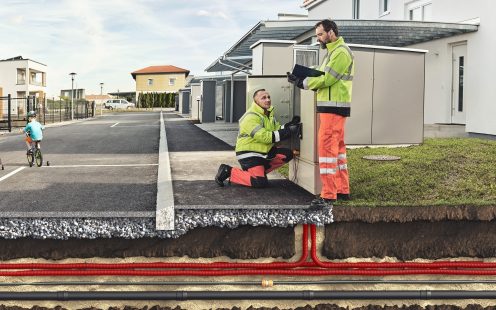
Advantages of underground cable ducting
As electricity demand surges across Europe, cable ducting has transformed modern network planning by streamlining maintenance and reducing long-term costs. Offering robust cable protection, lower environmental impact, and greater adaptability for future needs, underground cable ducting provides clear advantages that help electric utilities deliver more reliable service.
Improved safety
Electrocution from overhead lines can be a safety concern, especially in urban areas. By enclosing cables, underground ducting minimizes the risk of electric shocks, short circuits and fires.
Depending on the area, ducting may also help ensure compliance with local safety codes and standards, reducing legal and insurance risks for utilities.
Advanced protection
When laid at sufficient depth, direct burial and cable ducting offer similar levels of protection from environmental factors. Still, ducting has advantages in shielding cables from physical damage, commonly caused by construction work, tree root growth or earth movement.
Clear, distinguishable color-coding of ducts helps workers find underground cables, reducing the risks of accidental damage and service disruptions.
"While every country maintains its own color-coding for underground utilities, the value of clear visual warning should not be overlooked," explains Kåre Yttervik, Cable Protection Project Engineer at Pipelife Norway. "In reality, underground utility maps often are incomplete or inaccurate. A brightly colored pipe can be identified much sooner than a standard black cable."
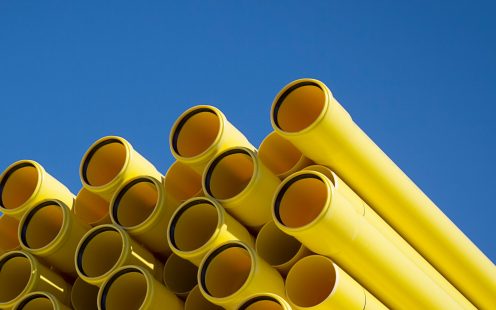
Reduced environmental impacts
Installing duct systems allows electric utilities to lower their ecological footprint. From using trenchless methods in sensitive habitats to repairing and recycling cables without repeated digging, underground duct systems are proven to be the most sustainable method of power transmission and distribution.
According to a 2025 report by Norconsult, a pan-Nordic consulting firm specializing in environmental engineering, digging up a direct-buried cable generates ~640 tons of CO2, whereas pulling out a cable from an underground duct results only in 20 tons of CO2.
Furthermore, recycling the aluminum from a single 25-km-long cable would save ~200 tons of CO2 emissions compared to using a virgin material.
While exact emissions in each case can be affected by numerous factors, these estimates clearly indicate how reliance on underground ducting can help power utilities reach their climate goals.
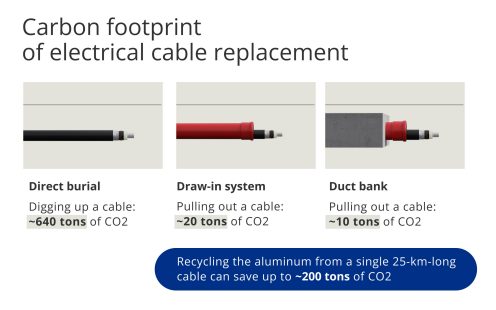
Enhanced aesthetics
Electric ducting systems provide a modern alternative to unsightly overhead lines. Burying ducts enhances the overall appearance of urban and rural landscapes, minimizing visual pollution and contributing to more attractive and functional environments.
Moreover, the removal of above-ground wires, poles, and towers has been demonstrated to boost property values in surrounding areas, in some cases by as much as 20%.
Space optimization
Underground ducting has enabled neater, better-organized cable management. Today, underground pipework in many urban centers has become so extensive that finding space for utility upgrades can be challenging. Other underground services, such as gas pipes, water pipes, communication lines and conduits, all compete for the same valuable ground space.
"The common trend across Europe is increased electrification, which, in practice, means installing more and larger-diameter cables," says Yttervik. "By utilizing ducts, electric utilities can simplify recycling, repairing or upgrading of existing cable systems, rather than continually burying more and more cables."
.jpg)
Lower long-term costs
While the initial investment in cable ducting is higher compared to above-ground or direct burial systems, ducts offer significant long-term savings by reducing the need for ongoing maintenance and repairs.
In case repairs are needed, the cables installed can be simply pulled out and replaced without repeated excavation. Since cable systems often contain valuable metals such as copper and aluminum, utilities can further reduce costs by reclaiming these materials.
Future-proof infrastructure
Cable ducting enables electric utilities to develop data and power infrastructure that can accommodate future increases in demand. Furthermore, ducting is used in smart grid pilot areas across the EU, as it simplifies access for sensors, fiber optics and monitoring equipment, increasing interoperability between utility services.
"It is increasingly common for electric utilities to lay an additional empty pipe or use a larger-diameter duct in areas where the usage is expected to go up. This way, an upgrade-ready, future-proof underground infrastructure can be installed in one go," says Yttervik.
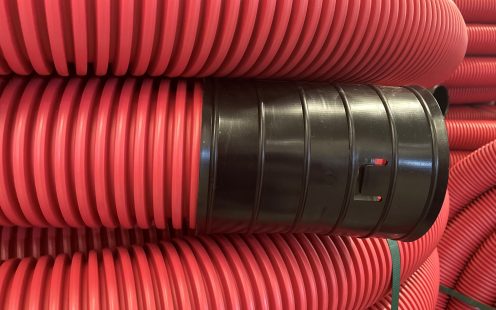
Underground ducting vs. above-ground installations
Mounting electrical cables overhead on poles or towers remains a common way of managing power transmission and distribution worldwide, especially for high-voltage and medium-voltage lines used in national networks.
However, overhead lines require frequent maintenance and repair, are prone to weather-related outages and create a visual disruption. This method has advantages when it comes to transmitting power over long distances or in remote areas with challenging topography.
"In contrast, underground ducting offers higher reliability, lower long-term maintenance costs and improved aesthetic appeal, crucial in urban areas. Buried cables are also less susceptible to vandalism, theft or intentional tampering, improving security for critical infrastructure," Explains Rob van Hoorn, Electro and Cable Protection Category Manager at Pipelife.
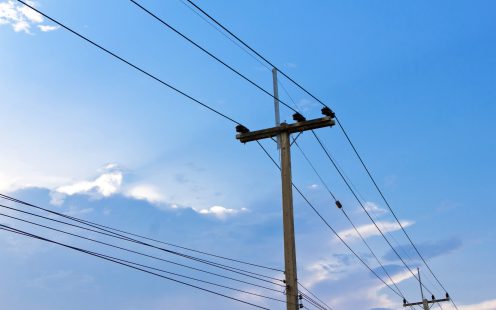
Direct burial vs. cable ducting
Direct burial of electrical cables is the simplest and most economical underground cable management method, often used in large open areas. After digging a trench, the cable is laid directly into the ground and then covered with soil. The trench is lined with sand; however, no additional protection for the cable is used.
Direct burial requires cables to remain on-site throughout the installation process, exposing them to potential damage such as deep scores on the outer sheath, exposed wires, or even cable breaks. In contrast, with ducting systems, cables can be securely stored in a warehouse and delivered to the site only when needed for the pulling operation, significantly reducing the risk of damage.
Furthermore, since cable ducts last at least twice as long as the cables themselves, ducting enables straightforward and cost-effective cable replacement or upgrades.
"Power cables generally serve for 40-50 years," says Yttervik. "In contrast, high-quality ducts, such as HDPE or PVC systems, are engineered to last at least 100 years. Due to the smooth inner surface of ducts, cables can be retracted and replaced whenever necessary without repeated excavation."
.jpg)
Cable ducting installation: Most common methods
Cable duct installation methods vary from traditional open trenching to advanced trenchless techniques, such as horizontal directional drilling (HDD). Irrespective of the selected method, it is essential to follow the local regulations (such as minimum depth requirements and color coding) and compare plans or use locating devices to identify pre-existing underground infrastructure and prevent damage to it.
Open trenching
Open trench cable duct systems are often employed in densely populated areas where regular maintenance or infrastructure upgrades are anticipated. Depending on soil conditions, site location and grid specifications, either draw-in systems or concrete encasements are used to ensure optimal protection and performance.
Draw-in cable duct systems
In draw-in systems, the ducts are laid underground, with manholes and chambers installed in between and serving as access points. Afterward, the cables are pulled through from manhole to manhole using specialized equipment.
Encased cable duct systems
Concrete-encased duct systems or duct banks are used in particularly demanding environments where superior mechanical protection of cables is crucial.
After digging the trench, multiple pipes are placed on top of and alongside each other, held in place by spacers. Then, formwork plates are placed, and the duct bank is filled with concrete. After the concrete has cured, the cables are pulled.
While encasement may initially be a more expensive method of laying underground cables, it provides more effective heat dissipation compared to other methods and delivers the highest level of protection for critical infrastructure projects.
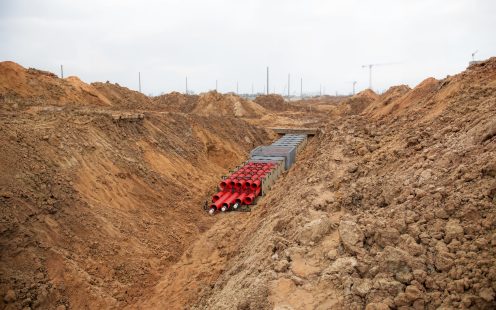
Trenchless installation of cable ducts
Trenchless cable ducting methods are commonly employed to cross obstacles such as roads, railways, protected habitats, public footpaths, buildings or waterways, where extensive excavation would not be possible or feasible. Horizontal directional drilling (HDD) is the most common trenchless installation method for such scenarios.
Horizontal directional drilling involves creating a bore path below the obstacle using specialized drilling equipment with steering capabilities. Afterward, the cable duct route is enlarged by reaming, and a specialized cable protection pipe is pulled through. As horizontal directional drilling places very high demands on pipe systems, exceptionally robust cable protection pipes that are resistant to crack growth and point loads must be used.

Types of plastic cable duct systems
The selection of the best duct system depends on factors such as the electrical specifications of the cables, the required diameter, the installation method and the specific environmental conditions.
HDPE pipes – these durable ducts can be supplied in long, continuous lengths, reducing the number of joints and speeding up installation. HDPE pipes are highly resistant to chemicals, corrosion and moisture, making them ideal for underground and even underwater applications. Robust HDPE pipes (PE-100 RC) are specially developed to withstand the demands of horizontal directional drilling and other trenchless methods. Smaller diameter HDPE pipes can be supplied in coils for easier transportation.
PVC pipes — these rigid and lightweight ducts are easy to transport, handle and install. They offer lower material costs compared to HDPE while still demonstrating excellent mechanical properties and long service life.
Corrugated cable protection pipes — manufactured from PE or PP, these highly flexible pipe systems are used to shield cables in complex or tight spaces where installing more rigid systems would not be suitable.
.jpg)
Pipelife provides a comprehensive range of top-tier cable protection systems designed for electrical, telecommunication and data cable applications. Present in over 20 countries in Europe, Pipelife's broad portfolio meets both international and local quality standards, addressing mechanical, environmental and installation requirements.
Pipelife offers both rigid and flexible piping solutions, manufactured from PE, PVC or PP to suit a wide range of installation scenarios. Our portfolio covers low-voltage, medium-voltage and high-voltage applications for diverse infrastructure needs.
Did you know?
Pipelife's production site in Stathelle, Norway, produces the longest HDPE pipes in the world, suitable for onshore, offshore and underground installations. The longest pipe produced so far was more than 1.5 km long.
.jpg)
Conclusion: The future underneath
As increased electrification and the expansion of green energy sources have become integral to achieving Europe's climate goals, cable ducting has emerged as the superior choice for power transmission and distribution — combining enhanced safety, longevity, improved resource efficiency and lower environmental impacts.
"Installing underground cable ducts isn't just about compliance with increasingly tight regulations," states van Hoorn. "It's about building more robust, sustainable and future-proof power infrastructure."
With decades of expertise and a wide product range tailored to every scenario, Pipelife is proud to help utilities, contractors and municipalities across Europe establish safer, greener and more resilient electrical networks.
Frequently Asked Questions
1. WHAT IS CABLE DUCTING?
Cable ducting is a method of electrical cable management that involves using protective tubing. Made from high-quality, long-lasting materials, ducts safeguard power cables from a range of environmental hazards, such as moisture, chemicals, mechanical impacts and temperature fluctuations, while simplifying network maintenance and upgrades.
2. WHAT IS THE DIFFERENCE BETWEEN CABLE DUCTING AND CABLE TRUNKING?
It is important to distinguish cable ducting from cable trunking, as the two terms are often used interchangeably but refer to distinct applications. Ducting generally involves burying cables underground for utility corridors, while trunking refers to the use of electrical conduits installed within buildings.
3. HOW DOES ELECTRIC POWER TRANSMISSION WORK?
Electric power transmission involves specialized infrastructure to ensure efficient, reliable delivery over long distances. All the components — generators, transformers, substations, transmission and distribution lines — make up the power grid, a vast network that enables the delivery of electricity across regions and countries. Power distribution can be organized in two main ways: either as overhead lines or as underground cables.
Find out more about our electro solutions
Get in Touch
Please choose your preferred way to get in contact with us. We will get back to you as soon as possible.
Fill our form